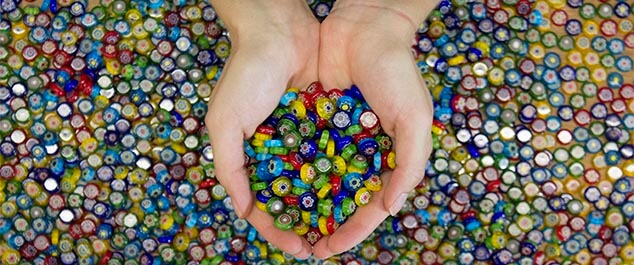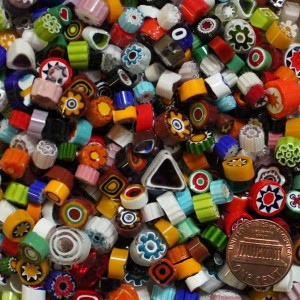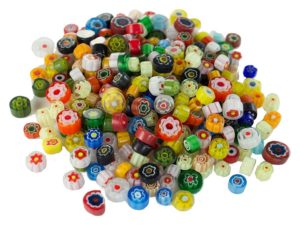

To make millefiori, glass artists take many thin glass rods or canes and arrange them in a bundle so that they form a pattern in the cross section. The pattern can only be seen at both ends of the bundle. Once the pattern is set, the rods in the bundle are fused together into one rod with a torch. This rod is stretched thin while it is hot, allowed to cool, and then cut into slices that we know as millefiori. Sometimes millefiori is also referred to as murrine, which involves small pieces of cut glass melted together to create a larger piece of glass.
Millefiori is often used to represent flowers in mosaic art. While flowers are the most common pattern in millefiori, other designs are also popular: stars, bulls eyes, hearts, swirls, etc. The millefiori assortment we sell includes many patterns and colors. It’s great as an accent in mosaic artwork, particularly mixed-media mosaics made with various types of materials, but the pieces are rather small (less than 1/2 inch in diameter.)
The thickness is roughly around 1/8 inch, so millefiori can be used with vitreous glass mosaic tile and stained glass.

